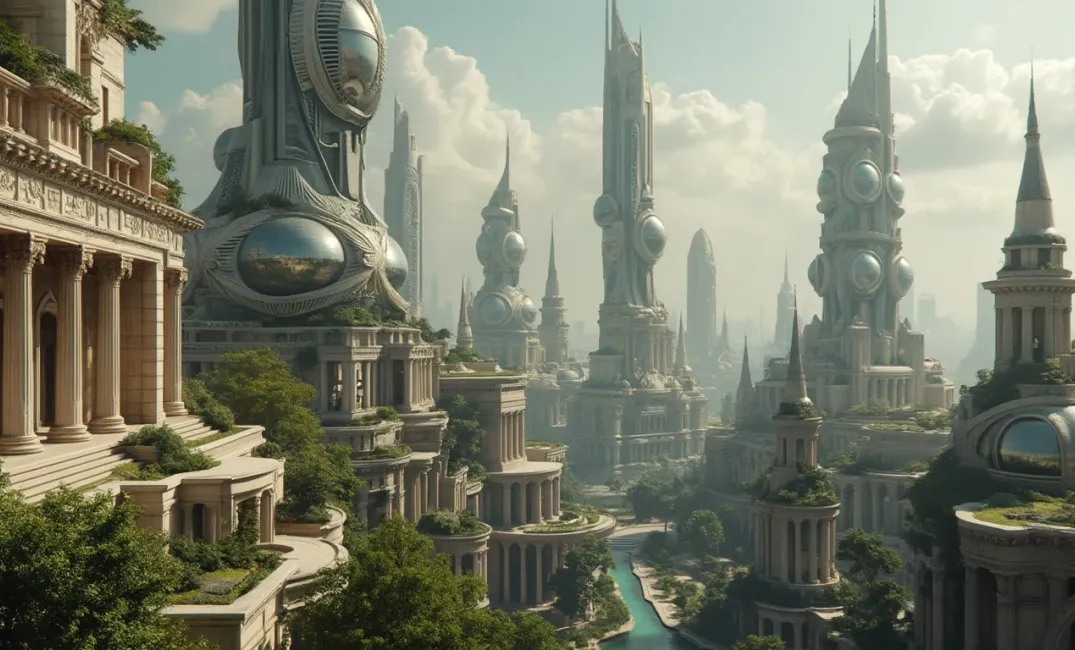Introduction: The Testament of Human Creativity
Architecture is the silent witness to humanity's evolution, standing at the crossroads of history, art, and functionality. It represents more than mere structures; it captures civilizations' aspirations, challenges, and transformations across time. These edifices are not only homes, temples, or offices but bridge epochs, cultures, and ideas, serving as eternal testaments to human creativity, ambition, and innovation. This entry explores humanity's architectural legacy, probing how it delineates cultural identity and exemplifies society's aspirations, spanning from ancient marvels to futuristic visions.
"Architecture is frozen music—the harmonious composition of form and space, narrating humanity's timeless dialogue with its environment." — *Author Unknown*
Foundations: The Early Edifices of Human Civilization
The Origins of Architectural Ingenuity
- Ancient Shelter and Community: The earliest architecture was driven by necessity, evolving from simple shelters like huts and caves to community-focused edifices, such as longhouses, that fostered social cohesion within tribes.
- Monolithic Marvels: Structures like Stonehenge and the Great Wall of China demonstrate humanity's innovative use of available materials and natural landscapes, symbolizing cultural ingenuity and the mysteries of ancient cosmology.
Cultural Expressions Through Architecture
- Mesopotamian Ziggurats and Egyptian Pyramids: These monumental structures were rooted in religious and cultural symbolism, integrated with myth and cosmology to connect the earthly and divine, reflecting a pursuit of enduring legacy.
- Influence of Greek and Roman Classicism: Greek temples and Roman civic architecture epitomized aesthetic idealism, exemplifying symmetry, proportion, and the use of columns, which have influenced Western architectural language through millennia.
Architectural Milestones: Epochs of Transformation
Medieval, Renaissance, and Beyond
- Gothic Cathedrals: Renowned for their soaring spires, stained glass, and ribbed vaults, Gothic cathedrals like Notre-Dame de Paris illustrate spiritual transcendence and community devotion through verticality and light.
- Renaissance Architecture: Marked by a revival of classical ideals, architects like Brunelleschi introduced linear perspective, balance, and harmony, seamlessly integrating art and science to shape urban landscapes and cultural rebirth.
Modern and Industrial Epochs
- The Industrial Revolution: Industrialization introduced new materials and methods, leading to innovations in structural engineering. Iron and steel frameworks enabled the construction of unparalleled heights, giving rise to iconic skyscrapers and bridges.
- Modernism and the Bauhaus Movement: Rejecting ornamentation, modernism embraced functionalism, simplicity, and the embrace of new materials, with Bauhaus championing the unity of art, craft, and technology to redefine architectural aesthetics.
Envisioning the Future: Contemporary and Sustainable Paradigms
High-Tech and Postmodern Innovations
- The High-Tech Movement: Characterized by the celebration of industrial materials and technology, architects like Norman Foster and Richard Rogers embedded transparency and adaptability in structures like the Pompidou Center, embodying new-age adaptability.
- Postmodern Reimagining: Postmodern architecture, seen in the works of Philip Johnson and Michael Graves, injects historical references and whimsy into modernism's functional clarity, expressing a dialogue between past and present.
Sustainability and the Ecological Imperative
- Green Architecture: Sustainable architecture prioritizes eco-friendly design, exemplifying the balance between innovation and environmental stewardship. Structures like Bosco Verticale integrate vegetation into urban environments, addressing climate concerns and sustainable living.
- Digital and Parametric Design: Utilizing algorithmic and computational tools, parametric architecture fosters unprecedented complexity and form, embodying digital creativity and redefining spatial possibilities through personalized, dynamic environments.
Architectural Narratives: Symbolism and Identity
Architecture as Cultural Identity
- Iconic Structures and National Symbols: Buildings like the Sydney Opera House and the Eiffel Tower transcend mere function, becoming cultural icons that embody national identity, collective memory, and artistic ingenuity.
- Monuments of Resilience and Memory: Memorial architecture, such as the Vietnam Veterans Memorial, serves as a poignant testament to cultural memory, resilience, and the communal processing of shared trauma and history.
Architecture's Role in Shaping Human Experience
- Urban Planning and Social Fabric: Cities designed with intent, including the innovative layout of Brasília or Copenhagen's emphasis on cycling, reflect architectural philosophies on human-centered design, fostering livability, accessibility, and community connections.
- Influence on Behavior and Society: The design of educational spaces, workplaces, and public areas influences personal and communal experiences, impacting learning, productivity, and social interactions in diverse environments.
Conclusion: The Enduring Dialogue Between Humanity and Architecture
The legacy of architecture is a dialogue between the tangible and intangible, bridging human creativity with its aspirations, identities, and tales inscribed in stone, steel, and glass. As we reflect on this legacy, we acknowledge architecture's profound capacity to encapsulate moments, influences, and innovations that shape the human experience across time and space.
Fostering sustainable, thoughtful, and inclusive design is paramount for future endeavors, ensuring architecture remains a testament to our collective heritage that adapts to evolving societal needs and global challenges. With each edifice, humanity builds not just structures but bridges across time—linking the eras, cultures, and visions situated within our shared architectural journey.
"Our built environment is a tapestry of ambition and reflection, a dance of stone and steel that echoes the heartbeat of society—past, present, and future." — *Author Unknown*
CULTURAL IDENTITY, HUMAN CREATIVITY, ARCHITECTURAL LEGACY, INNOVATION, URBAN PLANNING, MODERNISM, ANCIENT MARVELS, SYMBOLISM, ARCHITECTURE, SUSTAINABLE DESIGN

